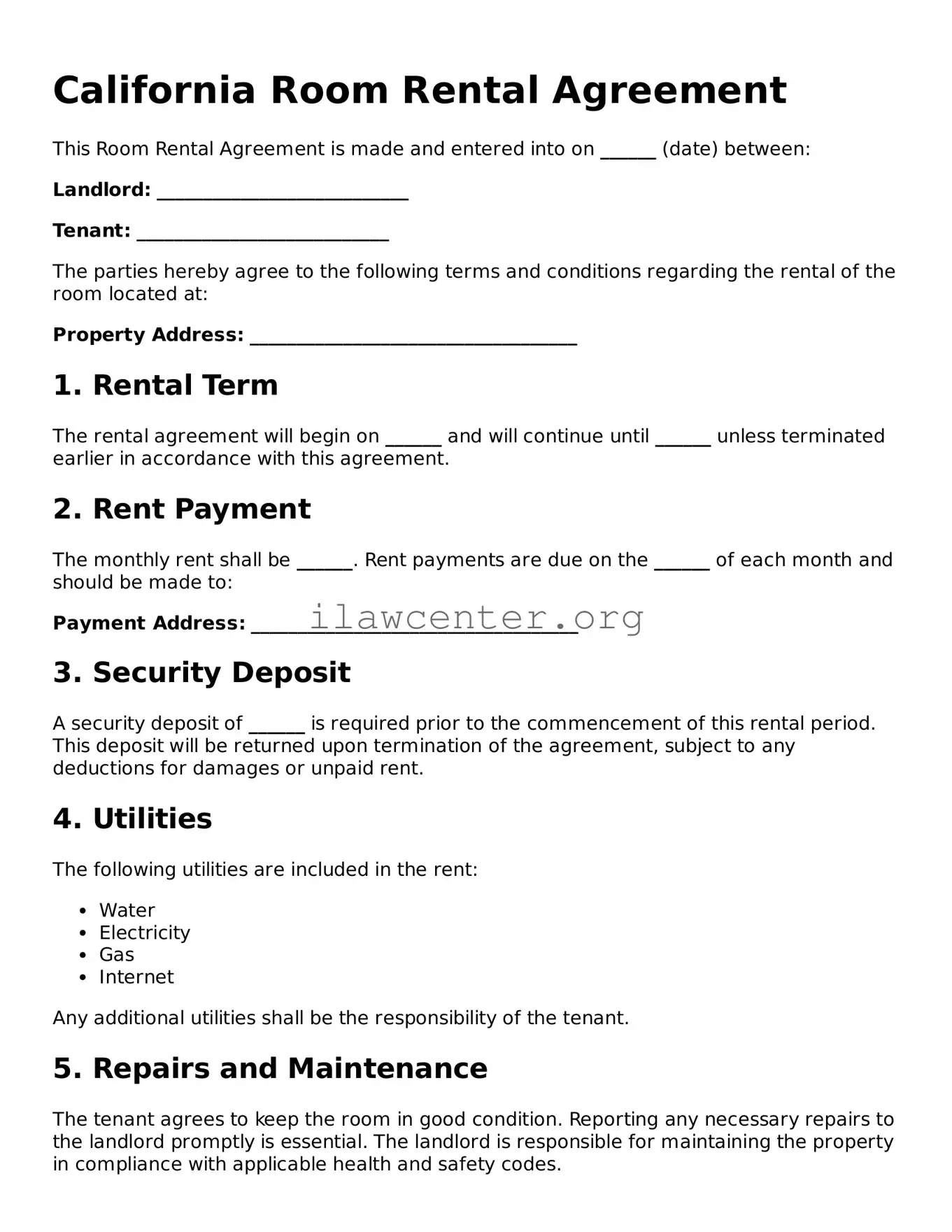Instructions on Utilizing California Room Rental Agreement
When preparing to rent a room in California, completing the Room Rental Agreement form is an important step. This document sets expectations and outlines responsibilities for both landlords and tenants. Ensure you gather all necessary information before starting the filling process, as it will make the task easier and more efficient.
- Obtain a copy of the California Room Rental Agreement form. You can find it online or request it from your landlord.
- Read through the entire form carefully. Familiarize yourself with the sections and requirements.
- Enter the landlord's name and contact information in the designated area at the top of the form.
- Provide your name and contact details as the tenant in the appropriate section.
- Fill in the rental property address accurately. This ensures clarity about where the rental agreement applies.
- Specify the duration of the rental agreement, including the start and end dates. Be precise to avoid misunderstandings.
- Outline the rental amount and payment terms. Include due dates and acceptable payment methods.
- Detail the security deposit amount and conditions for its return. Make sure to understand any local laws regarding deposits.
- Include any additional terms or conditions that both parties have agreed upon. This might involve rules on pets, parking, or use of common areas.
- Review the completed form carefully to ensure all information is accurate and complete.
- Sign and date the form as the tenant. Ensure the landlord does the same to finalize the agreement.
- Make copies of the signed agreement for both yourself and the landlord for future reference.
Once the form is filled out and signed by both parties, the rental agreement becomes a binding document. This helps protect your rights and outlines obligations clearly, making for a smoother rental experience.
